
I went to this performance from a chaise lounge in my living room in Flatbush, Brooklyn, where I am also writing now. From here, I can see my laptop screen, and to my right, my entire apartment (it’s a floor-through), and to my left, my busy sidewalk, some trees still holding orange leaves, and the fronts of low (2 story) row-houses. Dan Fishback is Alive, Well, and Living in His Apartment streamed here too, live, yesterday. On YouTube, I see that 627 watched with me. There was also a live audience at Joe’s Pub that I could hear. You can watch a video recording of the performance that I saw here, or read the script.
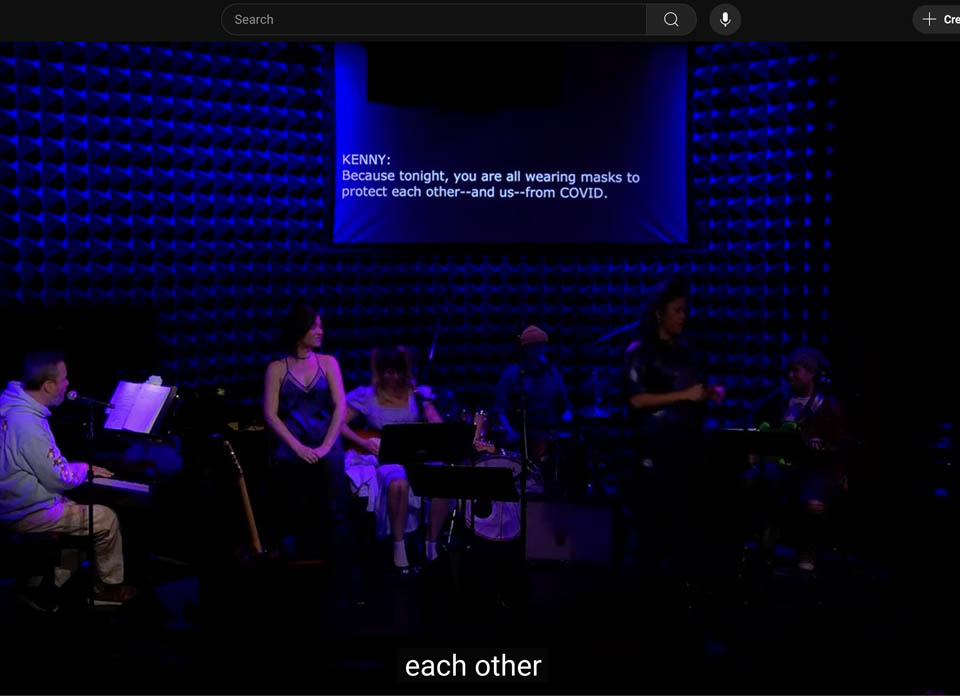
The performers entered the stage at 1:13 pm and spent some time introducing each other: each artist’s roles (piano, ASL sign language, guitar), their physical appearances, pronouns, and less commonly perhaps, vivid character attributes (as written by Dan Fishback, according to Kenny Mellman) which were sweet, creative. and funny.
According to YouTube: “DAN FISHBACK IS ALIVE, UNWELL, AND LIVING IN HIS APARTMENT is a rock musical theater song cycle about a chronically ill gay bitch trapped at home during a time of global fascism and a mass-disabling pandemic, wondering how to spend the rest of his life living in a nightmare.”
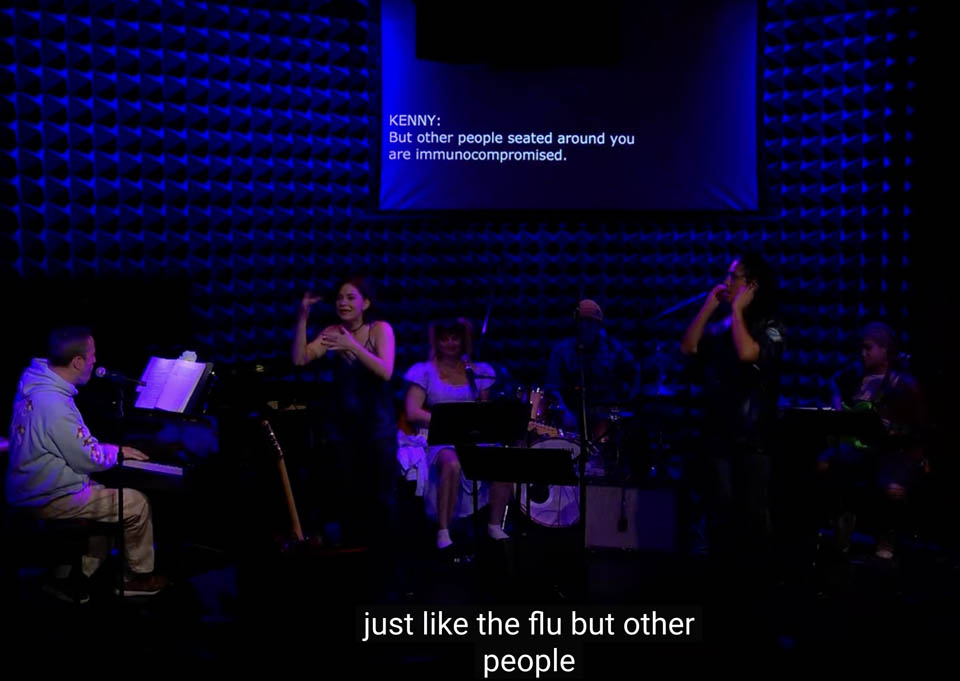
There were many many streams of information available: in-person audience response (online posting was disabled), lyrics, music, sign-language, audio-description (written by Dan, spoken by the performers, available here), and AI generated captions, just like the flu but other people. Making space (on stage) for these streams takes time, and makes the performance about its own forms and formats, in this case illness, liveness, presence, transmediality, performance, screens, watching, participating, singing, playing, the audience, the audiences, eating and drinking, the flu, people, and so on. Integrated access “is creatively structured into the core of the show, and is tied to the show’s values and purpose.”
As I wrote recently here, on this blog—refining my practice in the interval between election and inauguration by being in audiences that can feed and prepare me and us for what’s next—I love the meta. But in Dan’s show, the meta are also protocols for access; they are crip aesthetics. These are rarely upheld in American performance venues; and often practiced by disabled artists. At this live performance, you couldn’t eat or drink and you needed to wear a mask. Given that Joe’s Pub needs food sales to support itself, the math of all this (dis)inclusion is clear enough. Hats off to Joe’s Pub.
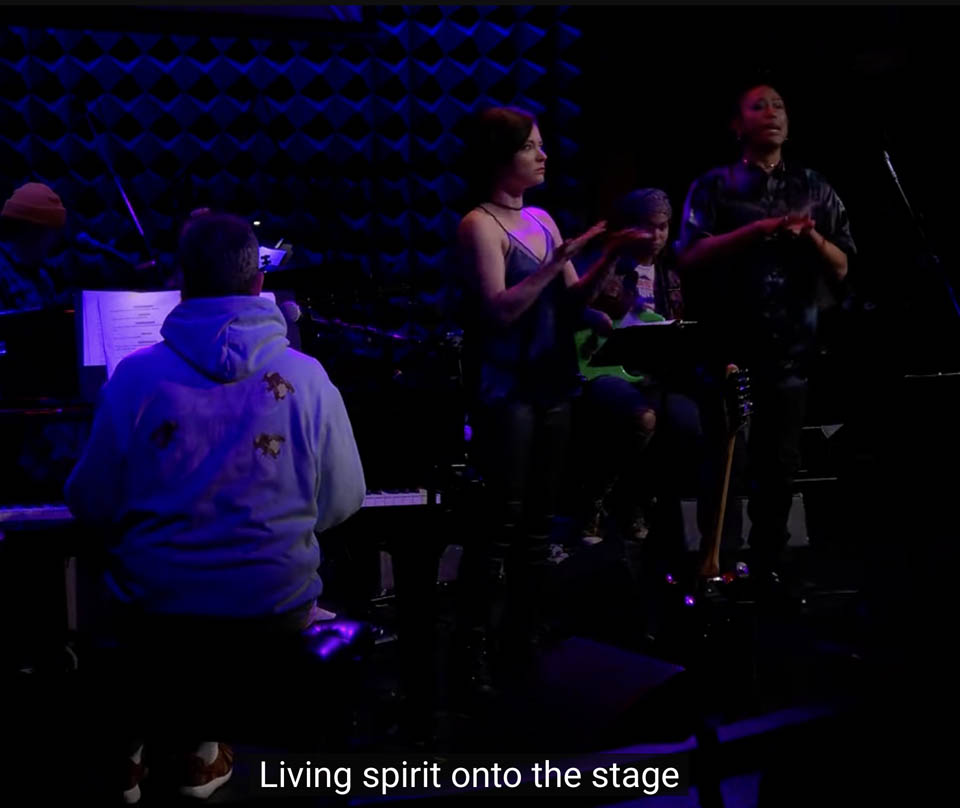
At home, I was taking screen-grabs, trying to capture the living spirit onto the [this] stage (a screen) that I might use in this blog somehow (yikes! my practice in the interval requires that I write a blog post about every audience I choose to join!) Only now, as I throw these onto this screen, do I realize that I could compose a perfect version of the “score” I am building in a better way. I could locate key moments from the video recording, now available on YouTube. I need not use what I made (for you) by heedlessly grabbing live. As soon as I realize this, I understand how the imperfections, the human touch, of liveness (and the human will to record and share it) corrals an audience, and connects viewers to each other and the performers. We don’t need to see each other to feel each other when we imagine we are (a)live and aligned and when we stay vulnerable enough to deeply engage (even from off-screen).
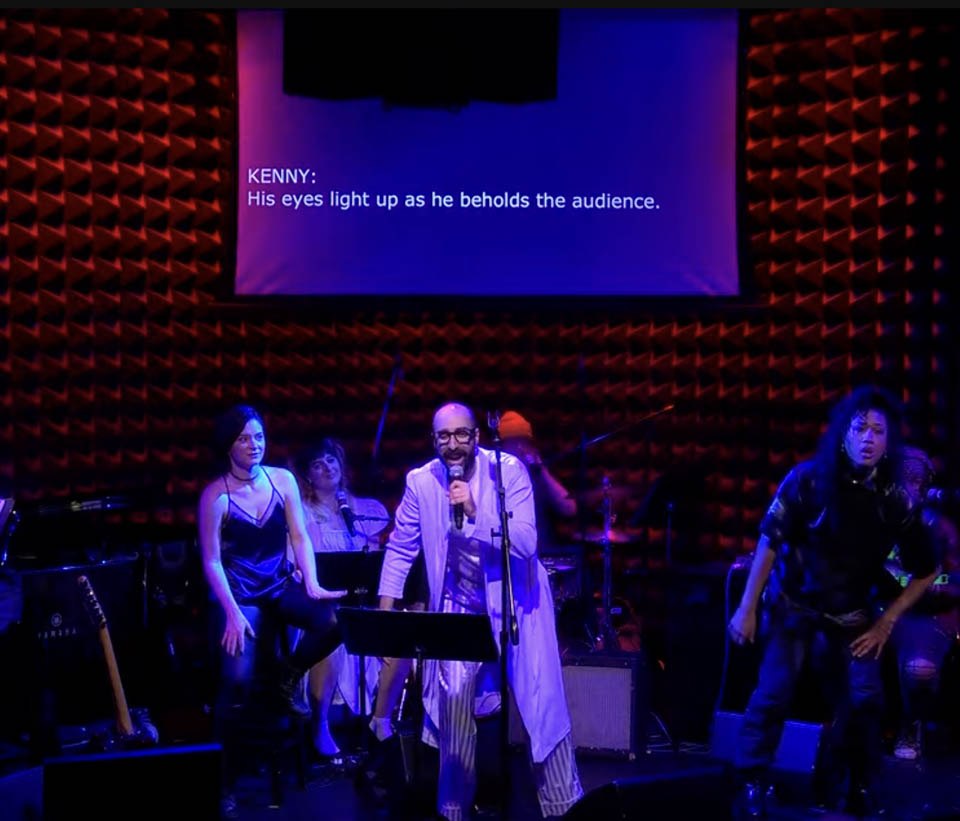
I decide to stay with my imperfect grabs. The one above is timestamped 1:24 pm. The fifteen I took work as a clock/record of my interests; I am imprinted, too. I took the one above, excitedly, when at last, Dan enters the room, “flying in” from his bed in Brooklyn. He is so happy to be here, “his eyes light up as he beholds [some of] the audience.” But … he is an avatar. Ron Shalom will play Dan who is too sick to be there/here. I realize that Dan, like me, is watching from Brooklyn and can’t be seen. This makes me sad. And it is also intriguing; a strange mirror on my own virtual attendance. However, unlike the sick mirror of social media, this one feels comforting, or at least honest. More like witnessing than amassing.
Dan: I know you are in bed, and there and not there for your big performance. I feel for and with you. This is transpersonal even as I can’t hold or even see you. Couldn’t you use that to go viral or something? I am moved by Dan’s ambivalence about social media as a prosthetic for presence. I am stretched to understand how our online embrace—audience and performer—off-screen/on-screen is a spiritual practice.
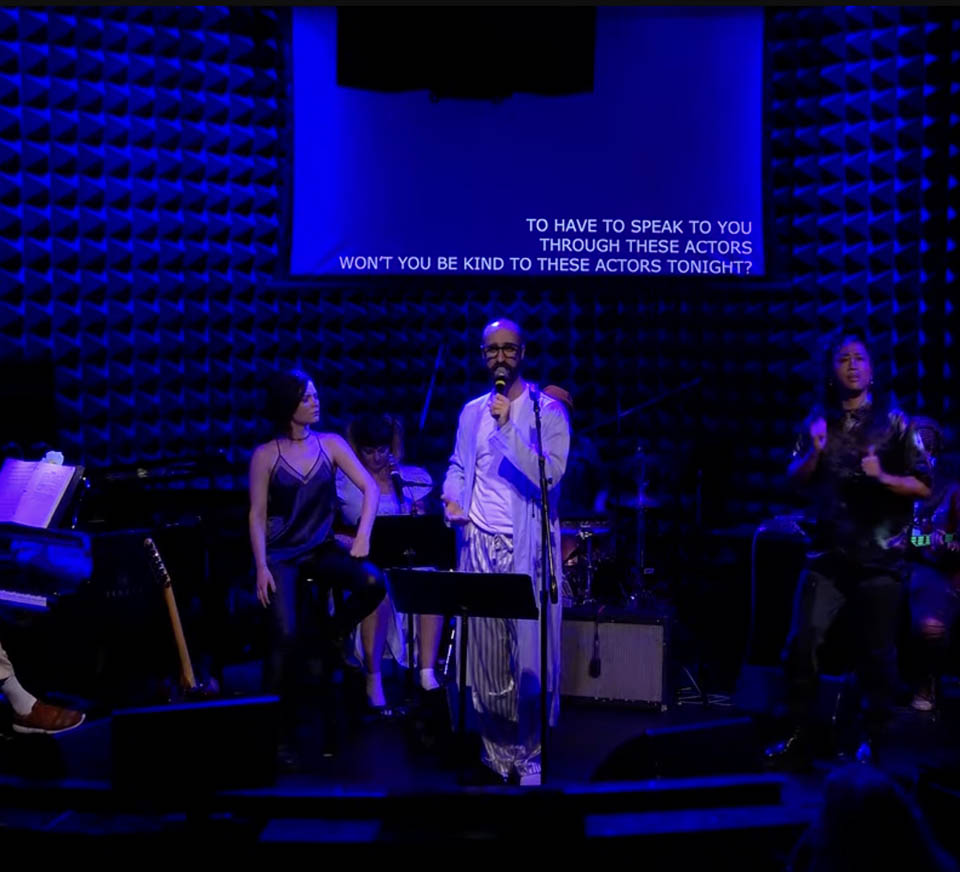
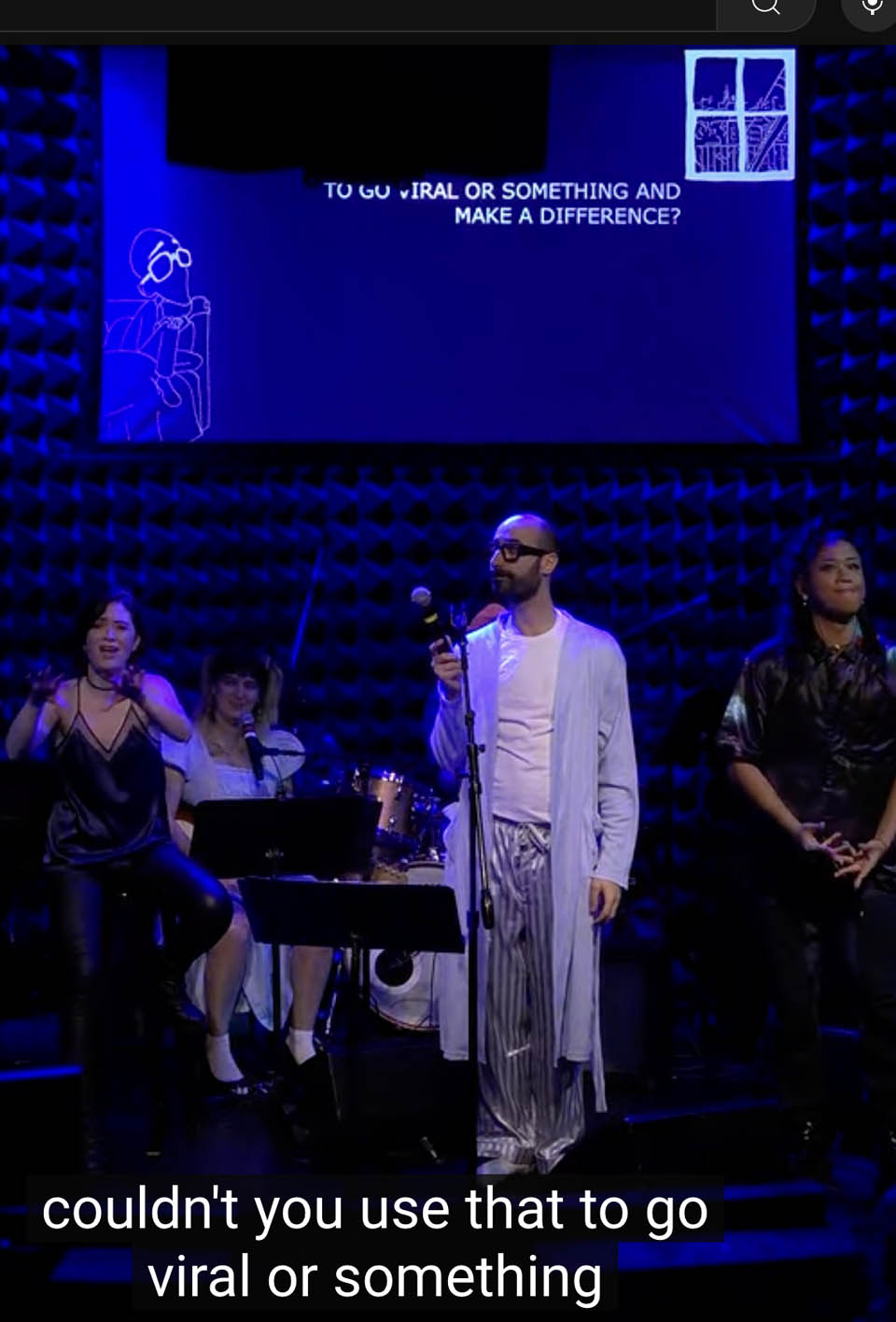
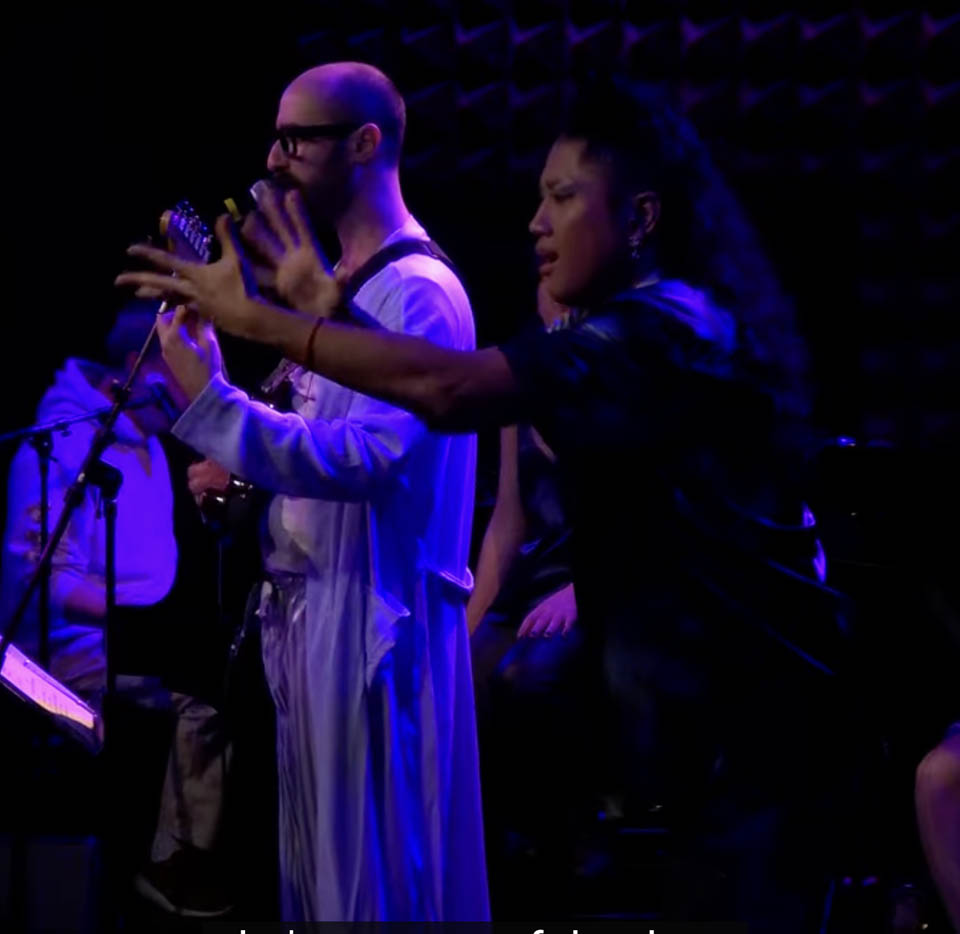
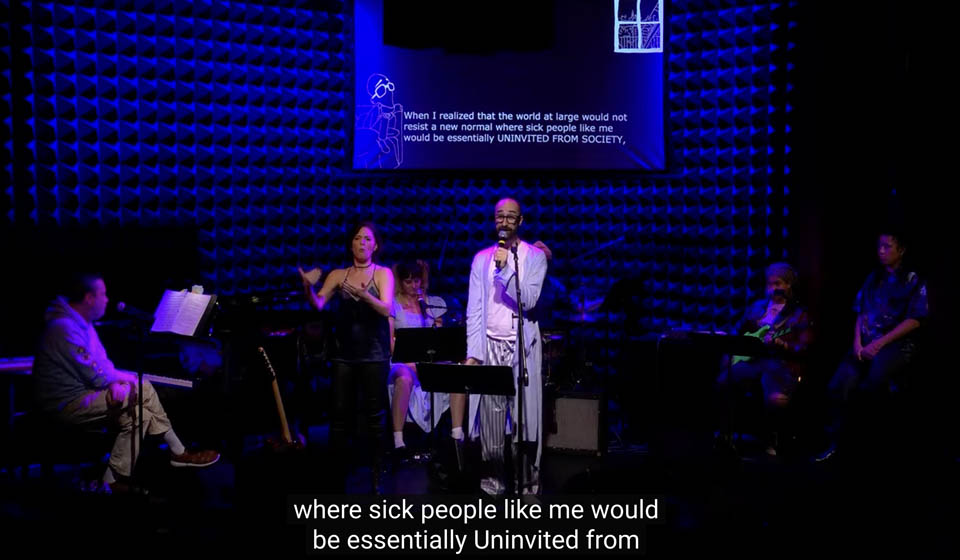
Dan, and sick people like him, have been essentially Uninvited from performance venues because of their ME/CFS and related caution around COVID. “He has to speak through these actors.” At this moment, a simple drawing of a window enters projection screen top right (a hat tip to mine), and a Dan cartoon enter the projection screen bottom left (a nod to me, and all the others), our spectral presence.
I have learned more than I can say from Dan, and other disabled, chronically-ill performance artists, who have been organizing so as to be seen, and to work, but more so to express how abandoning the ill, the old, the sick, the weak, is immoral and apolitical. The Practicing Inclusion in the Time of COVID project that we worked on, with many others, several years ago, a call for disability solidarity, has been proven impossible … and yet, you did it, Dan! (first live show in six years…)
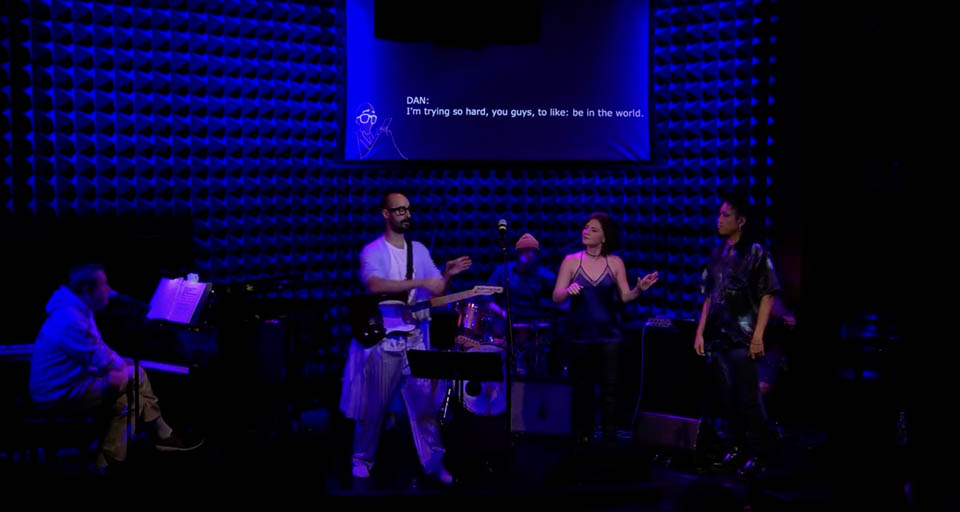
I’m trying so hard, you guys, to like: be in the world.
You guys. You are here with me, Alex, on your computer, in your room, and you are my audience. Are we together? Are we in the world? Dan, are you here, too?
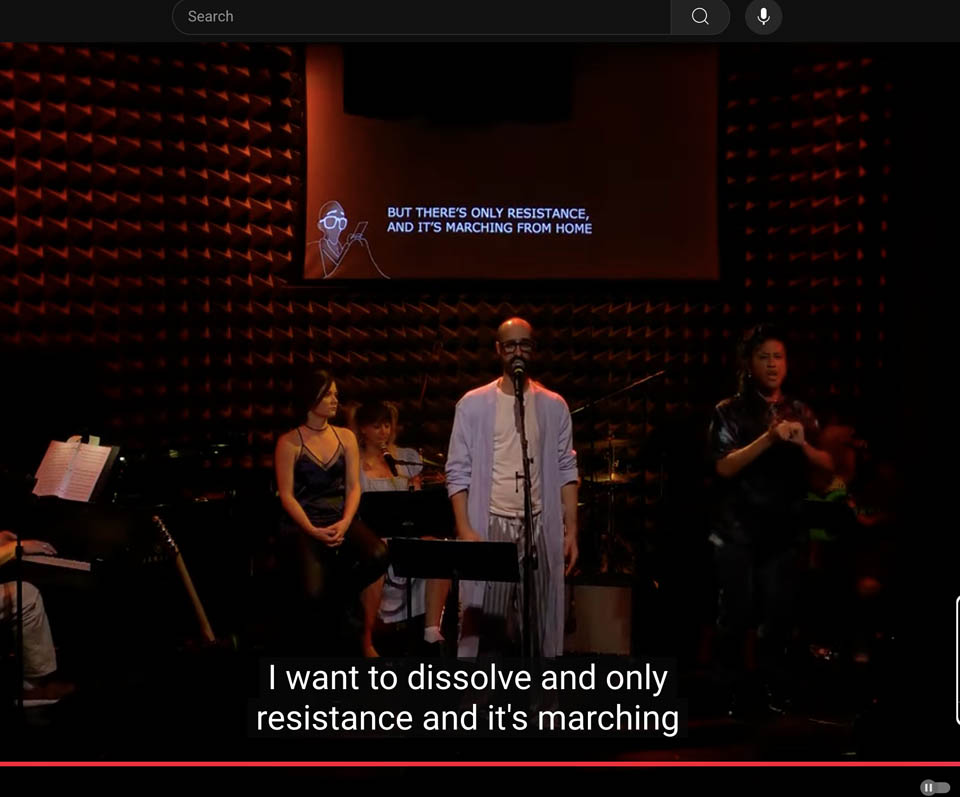
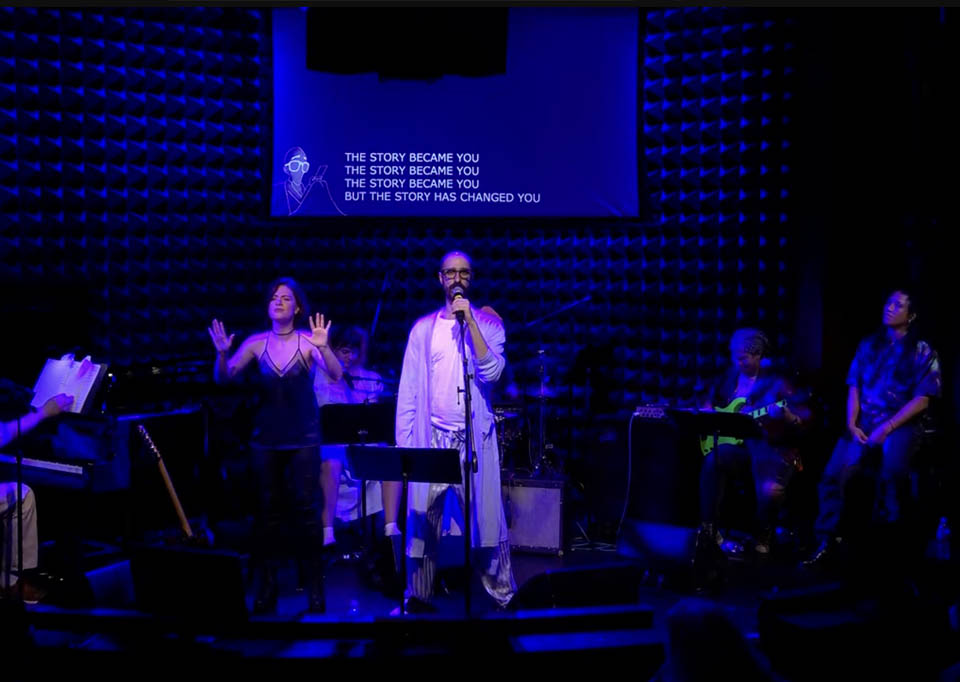

I want to dissolve and only resistance and it’s marching alter pain but the process of staging this show
I wrote that our imperfections make us human, but this AI poem is beautiful, too. Another process of staging deeply woven into the one I/we are making altogether, online and off, with our many pandemic technologies of care.
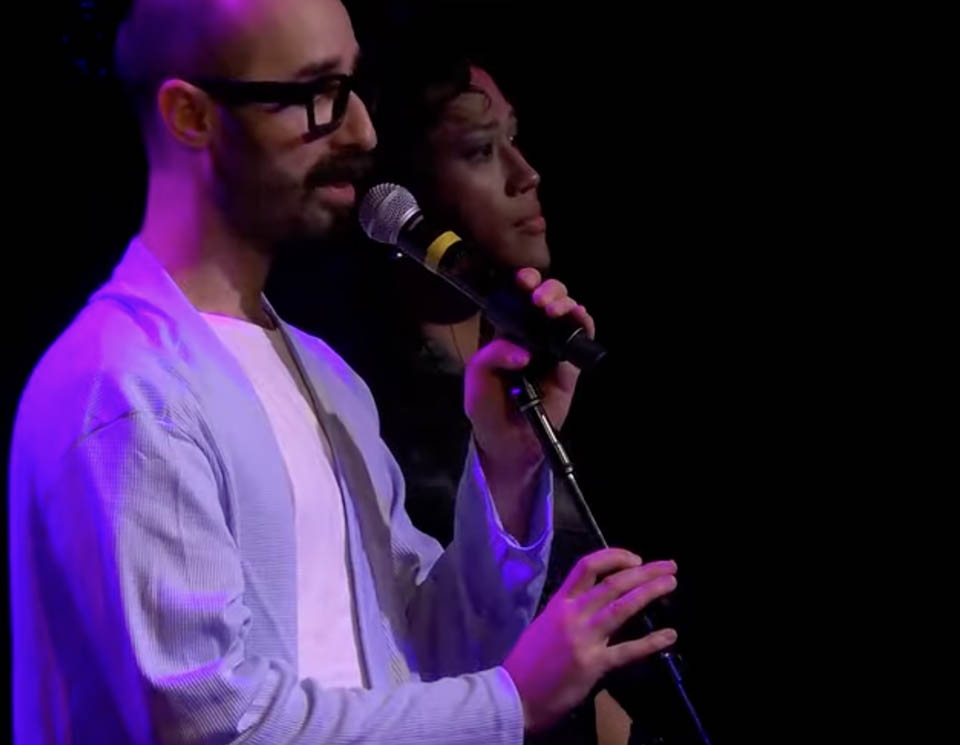
Dan, I have witnessed your pain—physical, existential, political—and your show. I can’t see you but I hear you. I remember that I was with you, not marching, but sitting (you had brought the most ingenious fold-out stool), and we sat together and became audience and celebrants and activists with so many others at the Emergency Seder in the Streets at Grand Army Plaza. When I had COVID for the second time, justa few months after that, and had debilitating PEM (post-exertion malaise) for about two weeks, I often thought about your chair, but more so your courage and your stupefying strength, to get to that Seder when it must have been almost physically impossible to move that far. You end your show saying: “I suspect that care is where hope begins.” I hope for another show soon.

Encore!
Comments
2 responses to “spirit capture”
[…] something to do with technologies: a belief in their expansionist capabilities, how they allow for information distribution and knowledge acquisition by populations that might otherwise be prevented from achieving or gaining that information. But you’re […]
[…] with you, imagining that you were watching it from your room just like I was. I called this “spirit capture,” where I projected for you (and me) a kind of mourning cum joy. I was thinking about you not […]